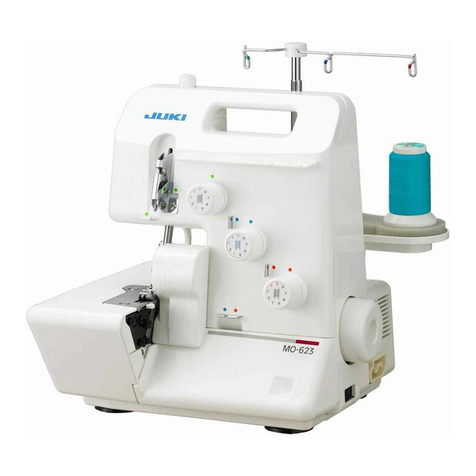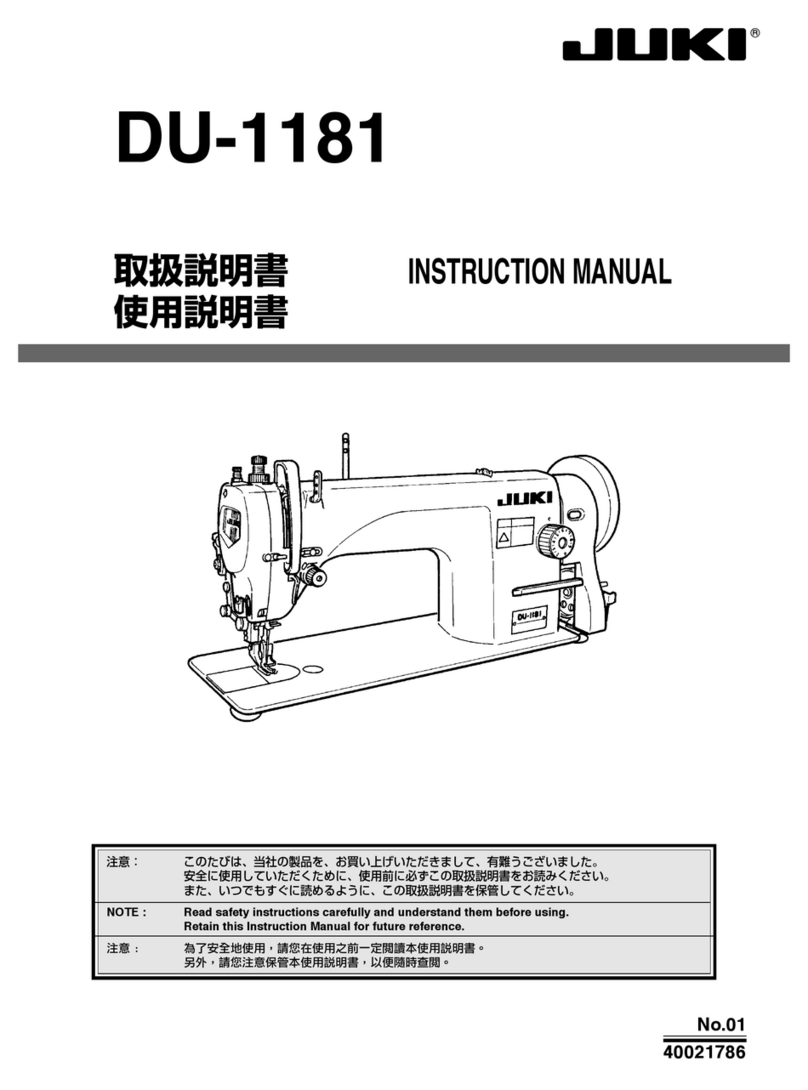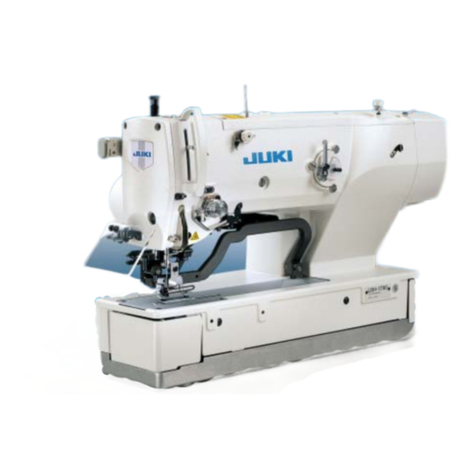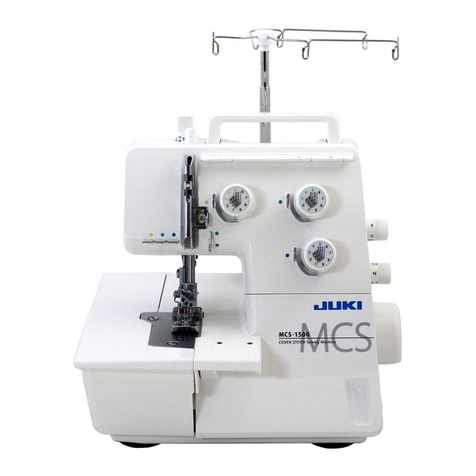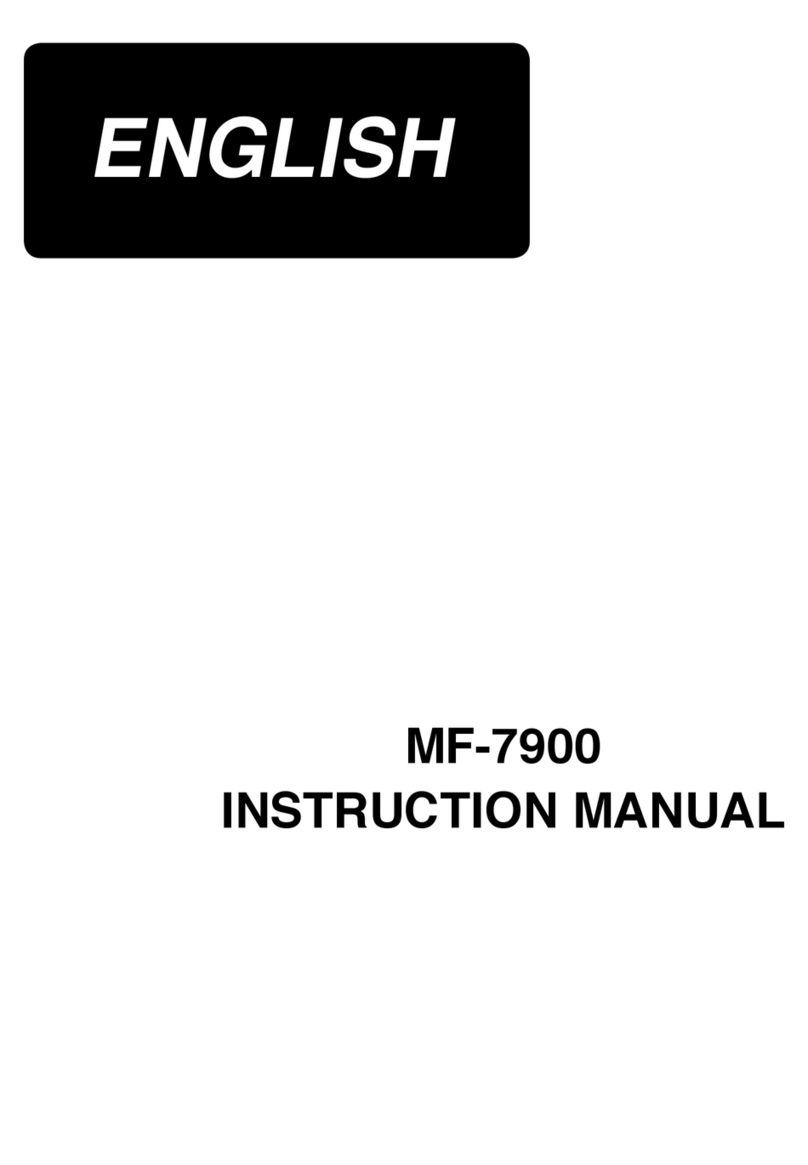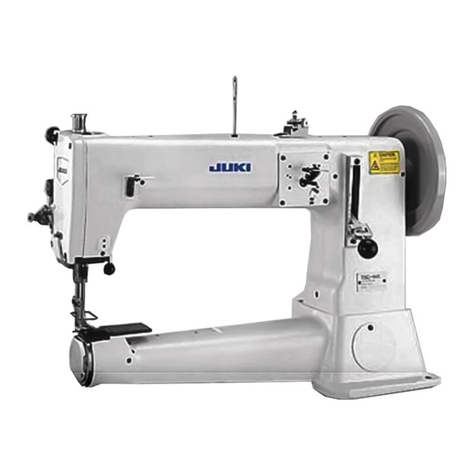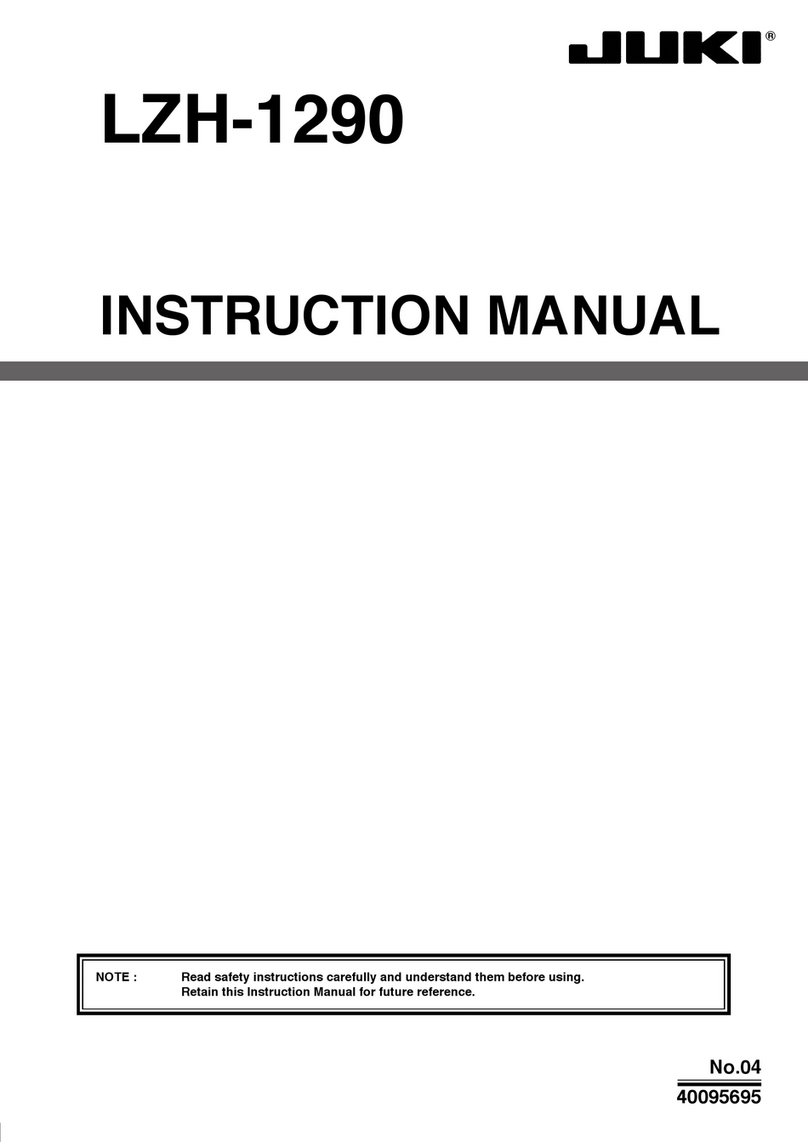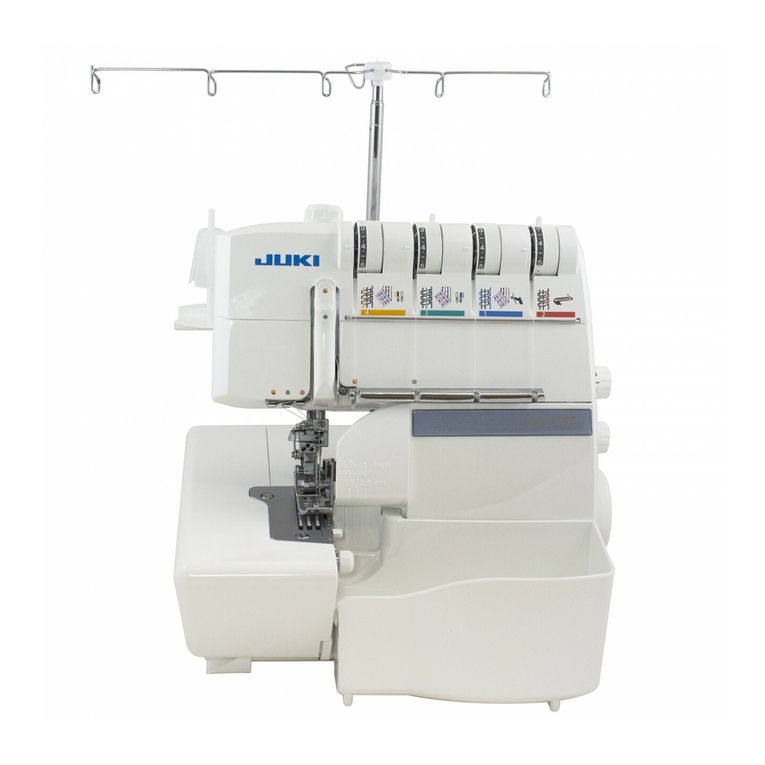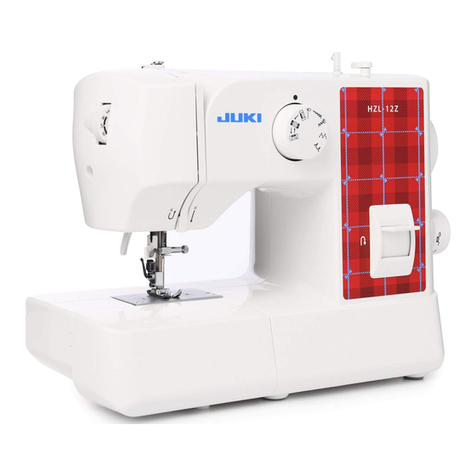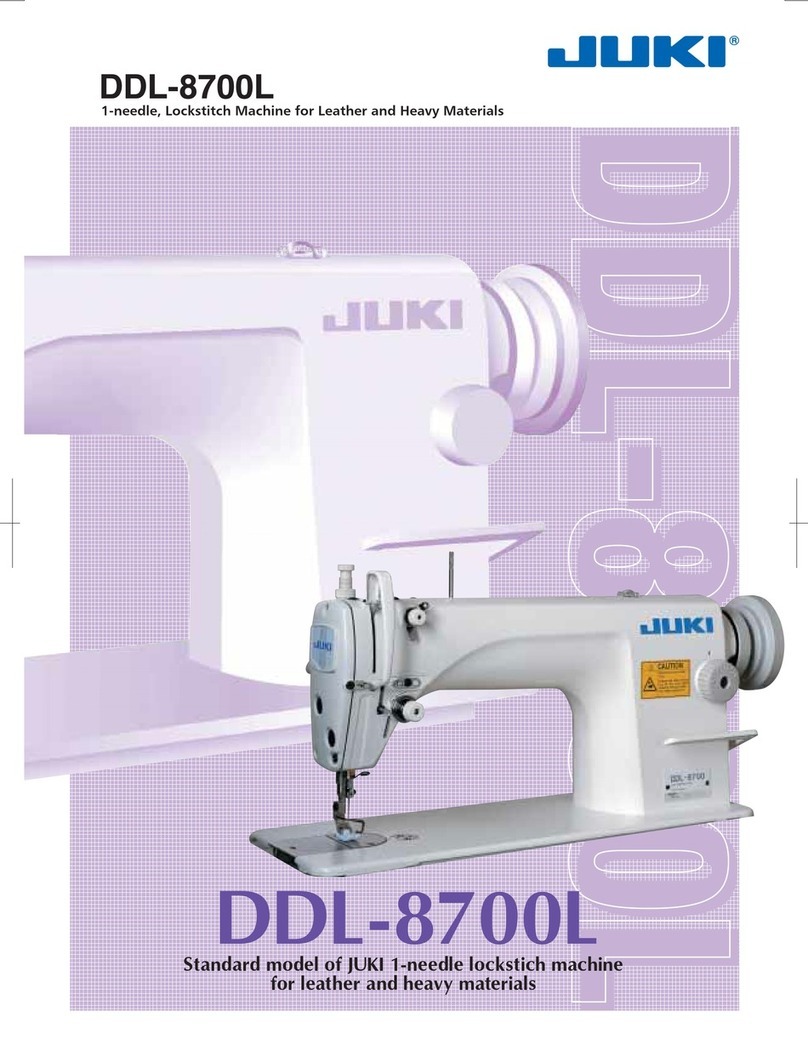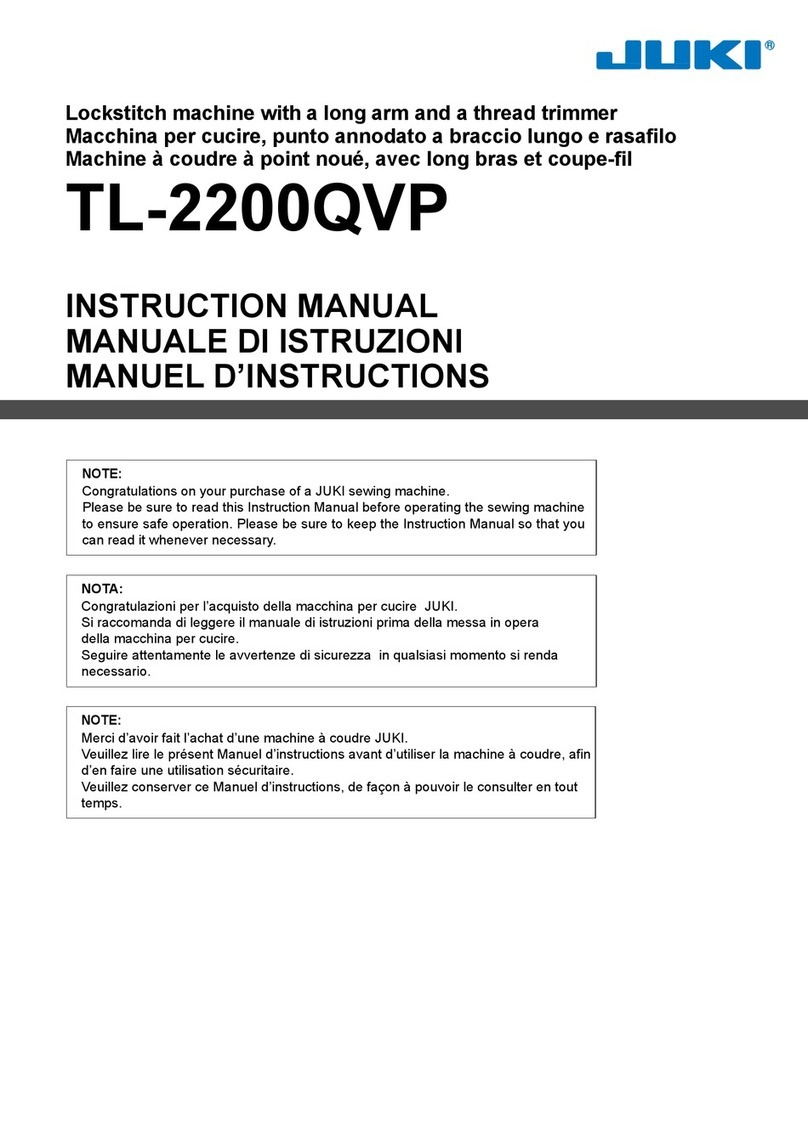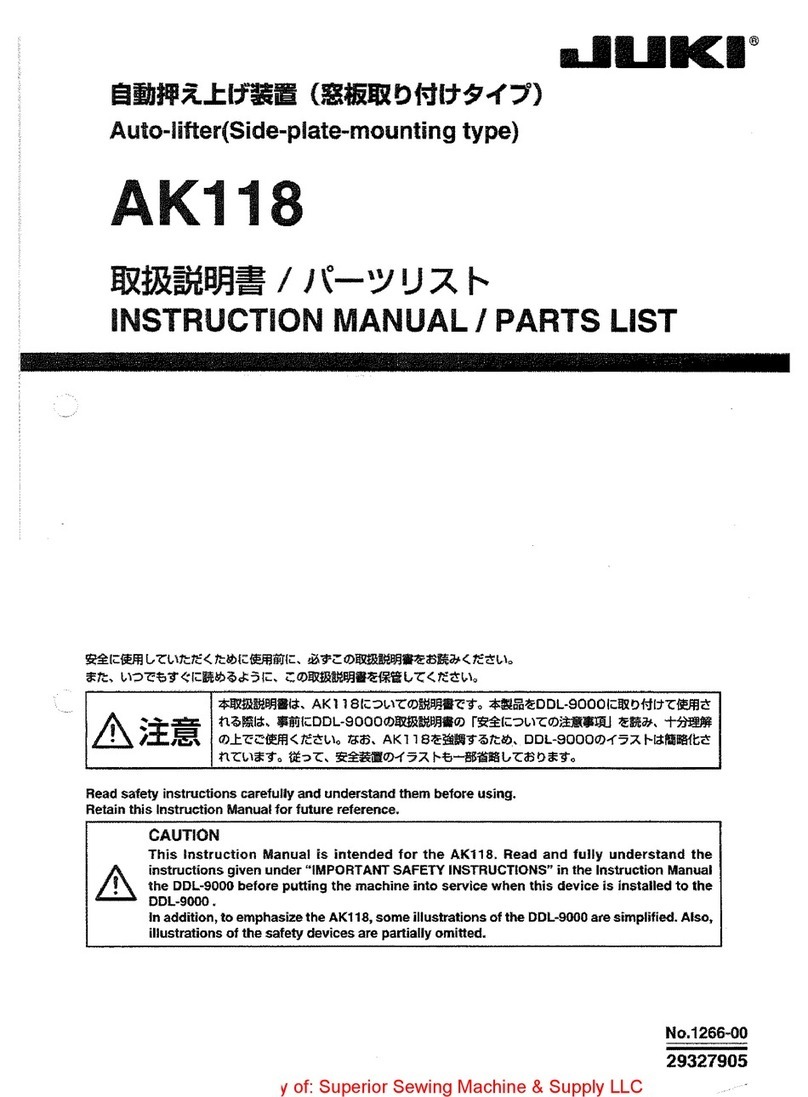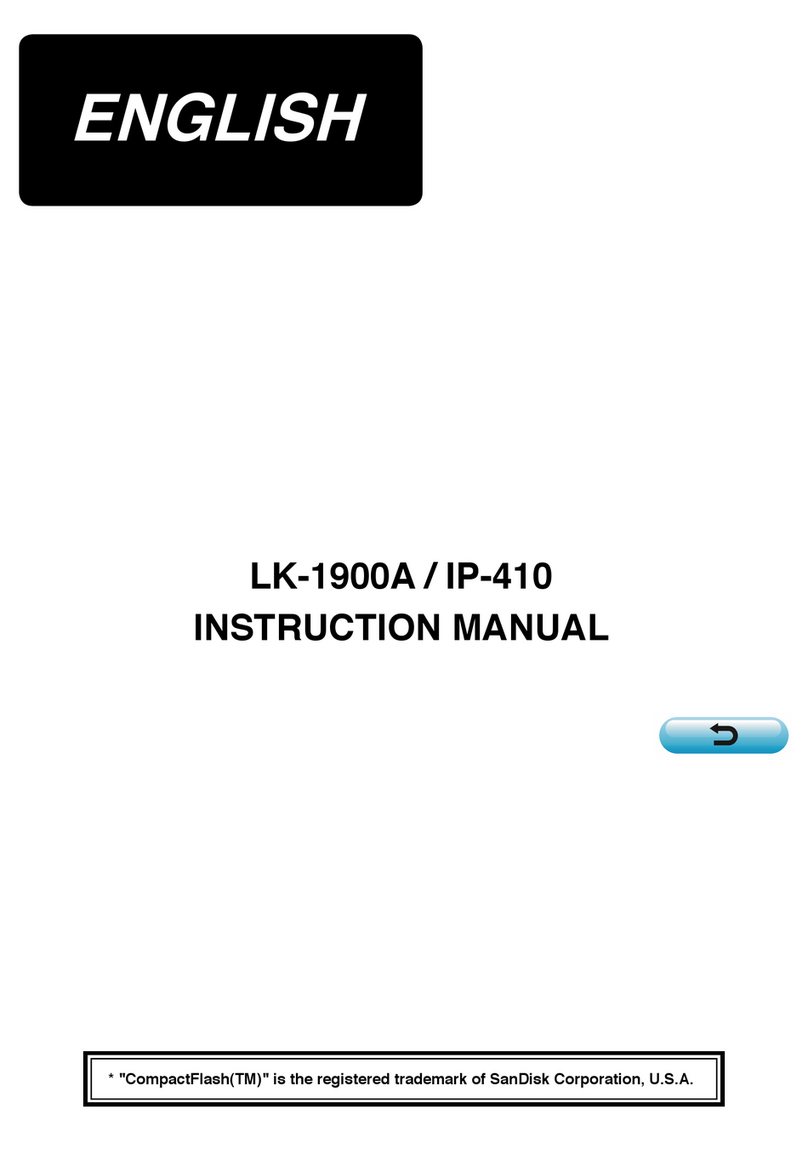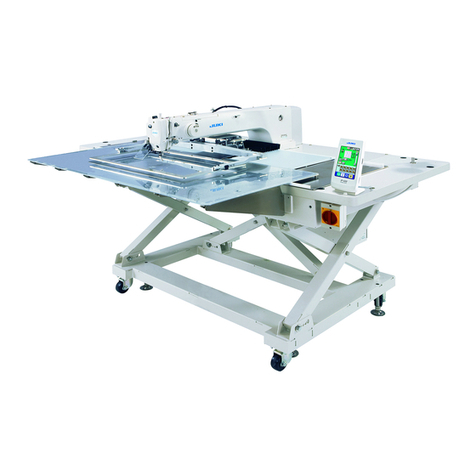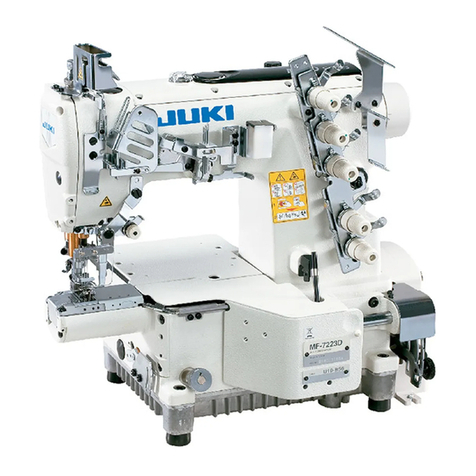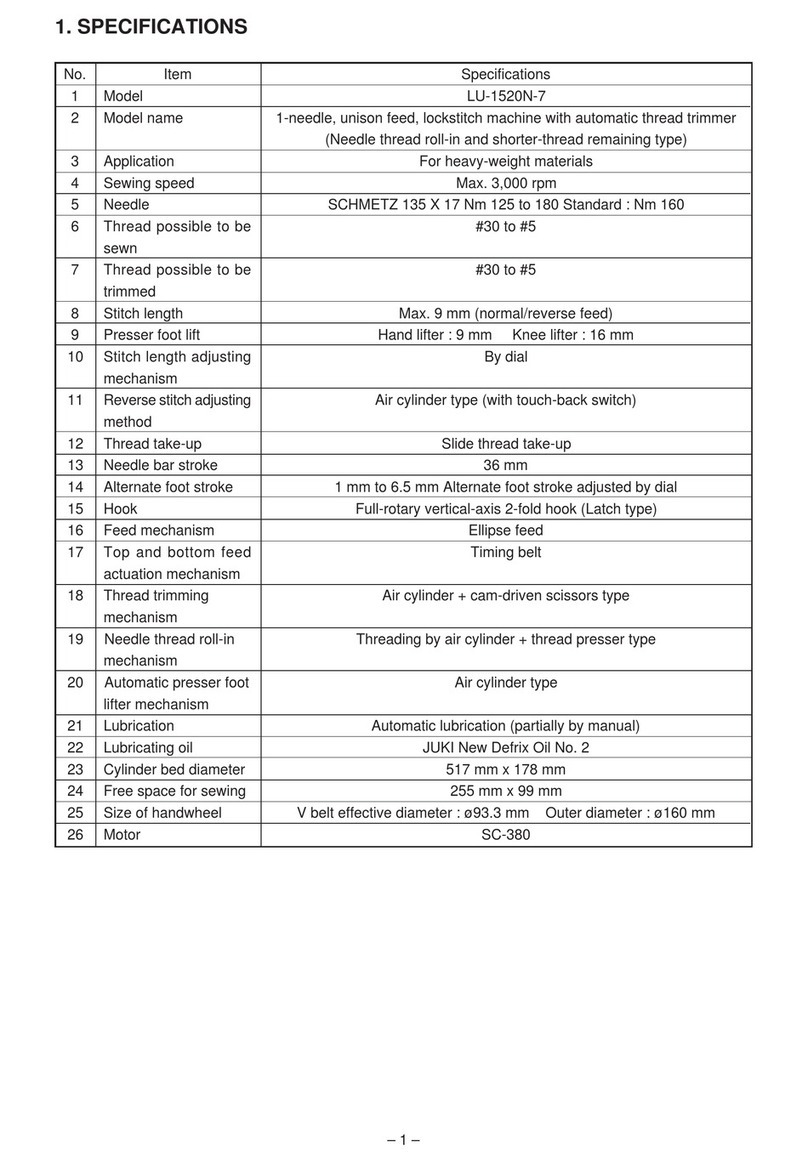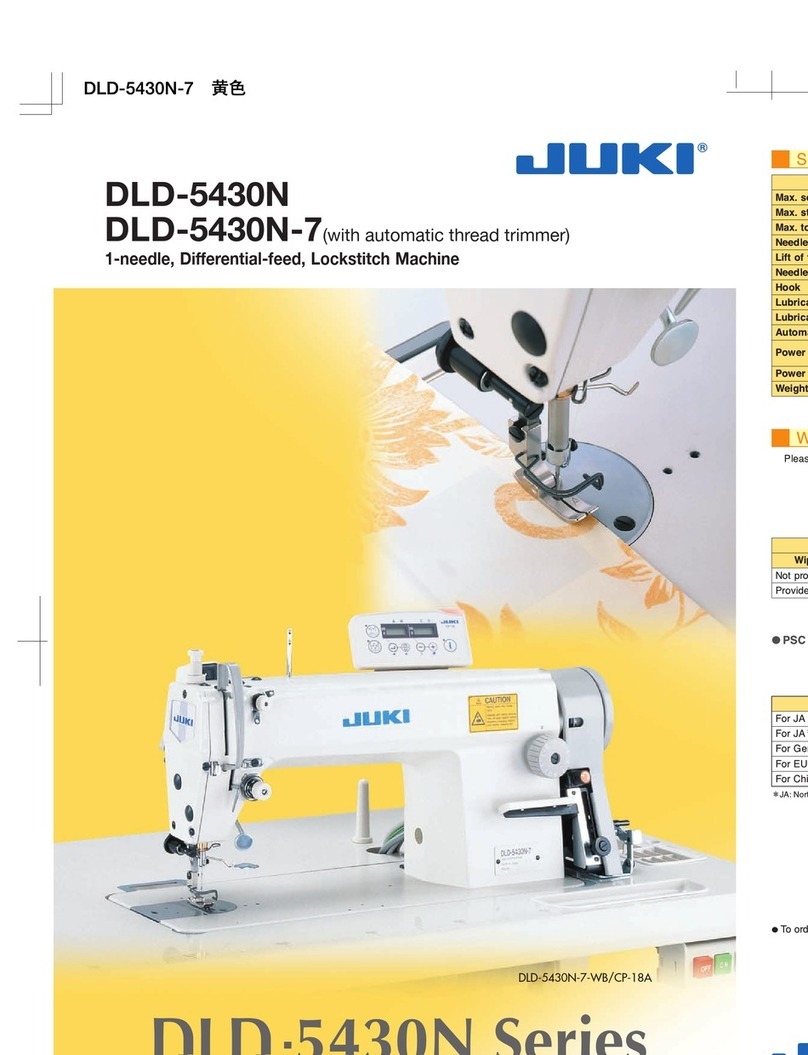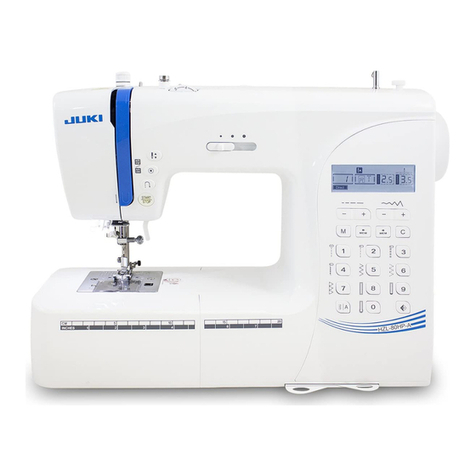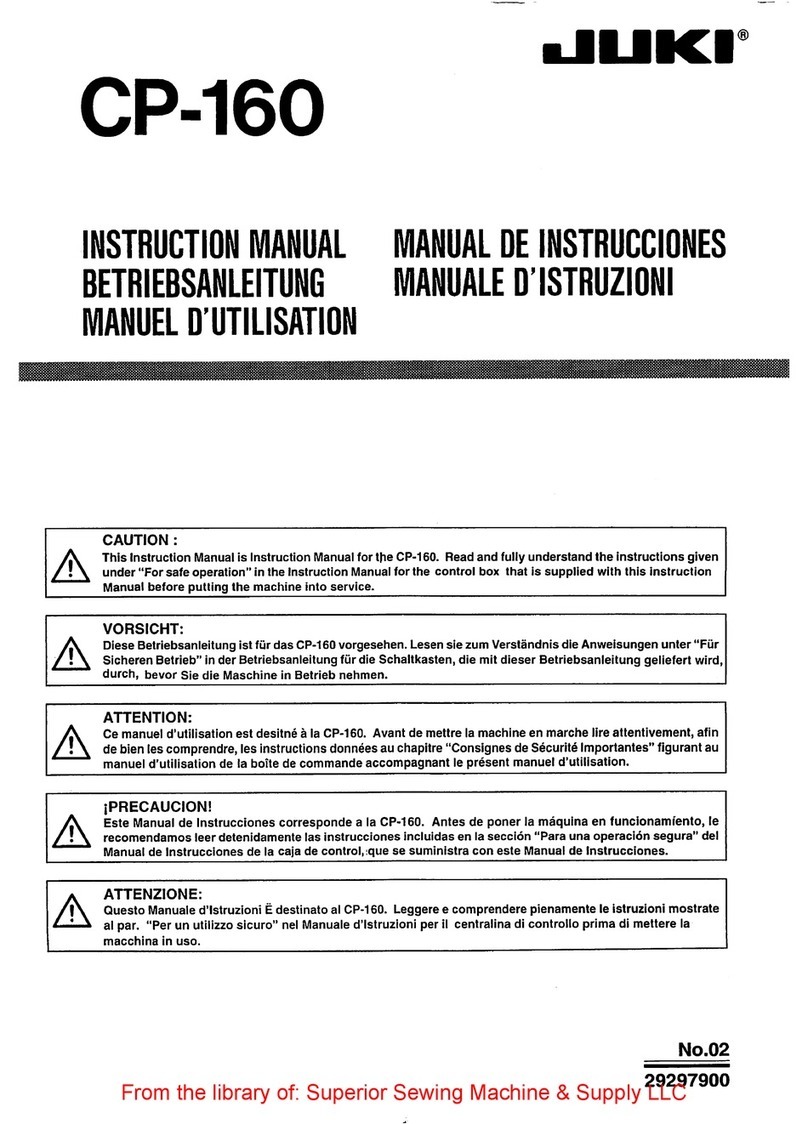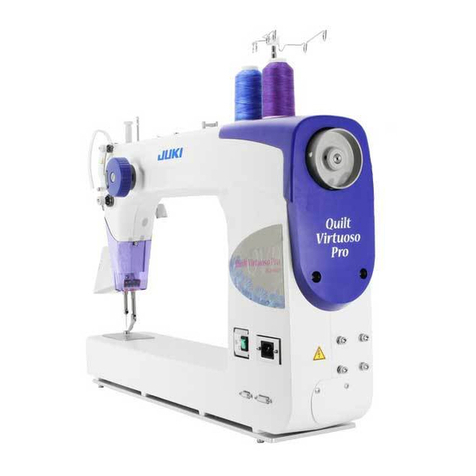– 5 –
To adjust the timing of the travel of yoke slide , align the engraved
marks of loop positioning finger cam and loop positioning finger
triangular cam with the engraved mark of cam and looper sleeve
after the adjustment of the looper so that the engraved marks are in a
straight line. Then temporarily tighten the screws.
1. For the lateral-motion timing of yoke slide , the height of ascending
needle bar should be 4 to 7 mm when yoke slide begins to
travel from left to right.
For the longitudinal position of the cam, the center of the cam should
be aligned with the center of the positioning finger yoke slide.
2. Adjust loop positioning finger cam as described below:
Yoke slide has to travel backward linearly along the oblique side
of its triangular movement. For adjustment, the cam should be turned
in the reverse direction of rotation if the yoke slide travels backward
non-linearly along a convex curve, or in the direction of rotation if it
travels along a concave curve.
3. Adjust the longitudinal position of the yoke slide by moving loop
positioning finger cam in the lengthwise direction.
oIf loop positioning finger triangu-
lar cam begins to travel too late,
thread breakage, excess thread,
balloon stitches, and insufficient
tightness of the stitches will result.
Onthe contrary,if itbegins tomove
too early, the needle will come into
contact with yoke slide .
oIf loop positioning finger cam
begins to go back too early, the
retreat of yoke slide will become
like a swollen line and looper
will hook the thread twice.
oOn the other hand, if it begins to
retreat too late, its retreat will
become like a hollow line and the
needle will come into contact with
yoke slide .
oIf the longitudinal position of the
yoke slide is improper, looper
will hook the thread twice or the
needle will come into contact with
yoke slide .
1. Turn the needle driving pulley as you draw the thread in the direction
of arrow mark Aand you will find a point at which the tension disc
on the tension post No. 2 release the thread. At this moment, the
standard distance from the top end of the needle bar bushing (upper)
to the top end of needle bar is 44 to 47 mm (in case of the needle
of TQ x 7, 54 to 57 mm)
Perform the following adjustments especially when the
undermentioned troubles occur frequently.
2. Loosen nut , insert the blade of a screwdriver to the top slot of
the tension post No. 2 and turn it in the direction of arrow mark Bto
lowerthe height of the thread floating bar and in the opposite direction
to raise the height.
oIf the thread tension is released
too early, excess thread and/or
poor tightness of the stitches will
result.
oOn the other hand, if the timing of
the thread tension release is too
late, thread will break.
Yoke slide retreats
like a swollen line.
Yoke slide retreats
like a hollow line.
Adjustment Procedure Results of Improper Adjustment
Adjustment Procedure Results of Improper Adjustment
